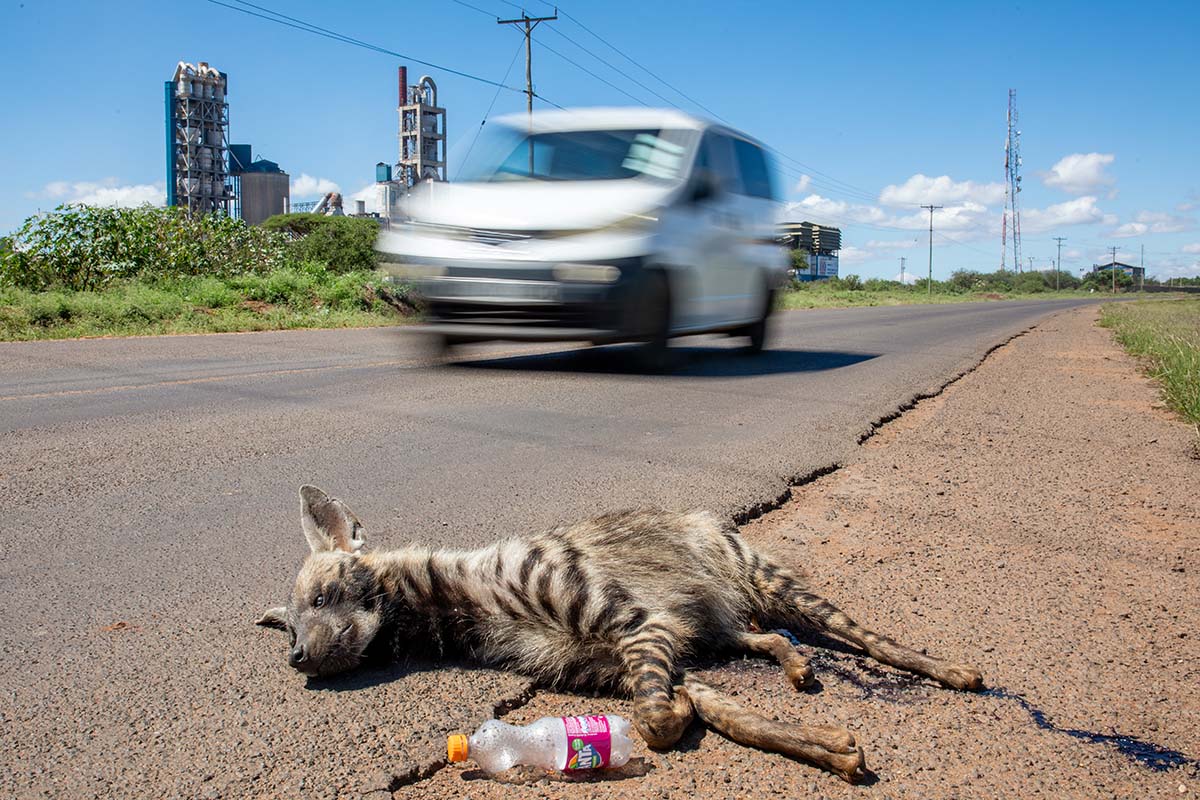
Kenya’s roads are notoriously dangerous. They claim the lives of thousands of people each year. What is less reported on is the effect they also have on wildlife.
Built in 2007, the Emali-Loitokitok Highway runs through the heart of Big Life’s area of operation (AOO). There are few potholes and almost no speedbumps – and that is a problem. With no restrictions on the speeds cars, trucks, and motorbikes can drive, collisions with wildlife are increasingly common.
We collect data on all wildlife fatalities, including those caused by vehicles, and since 2018, an average of 30 large mammals have been killed each year in our AOO. 2019 was the deadliest year with 49 fatalities. Zebras, giraffes, and gazelles top the list of victims, but rarer species including 3 cheetahs (one of which was killed just last week), a lion, and even shockingly an elephant have also met their end on this road. Hyenas, like the striped hyena in this image, are also common victims, as they are often the ones scavenging from other roadkill.
There is sadly little we can do to protect wildlife across most of this road, but we have come up with a solution for arguably its most important section.
The Kimana Corridor is the only link between Amboseli National Park, Kimana Sanctuary, and the ecosystems beyond towards Chyulu and Tsavo National Parks. The Corridor is crucial for the ecosystem’s migrating wildlife, and it is used by everything from elephants, lions, and giraffes to aardvarks and springhares.
Recognizing its importance, we installed speedbumps on either side of the road that meets the corridor. Since this intervention, we have not recorded a single wildlife mortality in that area, demonstrating that small adjustments are sometimes all that are needed to make a big difference. For the Kimana Corridor at least, are relieved that scenes such as this should never happen again.
Photo: Joshua Clay
